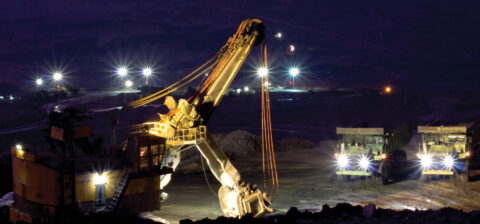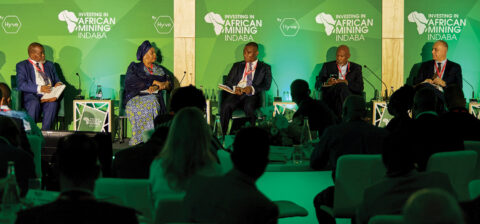SA Mining
How Junior Miners Can Benefit From ‘Green’ Metals
The growing climate crisis is driving a rapidly increasing demand for “green” metals, many of which can be found in great quantities across Africa. In fact, ratings agency Standard & Poor’s (S&P) Global indicates that moving forward, many commodity-exporting economies on the continent will see increased demand for minerals such as copper, magnesium, lithium, cobalt, graphite, and rare earth elements.
This surge is to be expected, given the importance of these minerals in low-carbon energy generation, as well as in the production of electric vehicles (EVs). Clearly, this is a market that presents new opportunities for those junior explorers that are ready to act.
Jason Brewer, CEO of Marula Mining, a junior miner focused on the battery metals space, told delegates at the recent Junior Mining Indaba that there had been tremendous growth in demand for Africa’s “green” commodities.
Large local resources
“Globally, demand for battery metals is increasing, as the adoption of EVs and renewable energy solutions rises. These metals are essential for the production of rechargeable batteries, which are one of the vital components of the developing renewable energy system,” he says.
“The availability of these metals will therefore play a major role in shaping the future global economy, and we plan to be part of this. Graphite, copper and lithium are the key components of our focus.”
Brewer points out that Africa’s resources in this respect are large, noting that “when we explore for these commodities, we find them”. He suggests that East and Southern Africa are among the best areas to explore.
“In South Africa, there are around 6 000 closed mines that could easily be restarted by juniors and quickly create employment and produce significant earnings for the country. In fact, if such mines existed in Australia, the junior miners there would have already begun reopening and reworking these with new technologies.”
He suggests there are tremendous opportunities for juniors on the continent, if they simply focus on grasping the opportunities presented by the current green environment in which we find ourselves.
Explaining how Marula Mining has done it, he points to three particular projects. The first is the Blesberg lithium mine in SA. He says there’s a lot of associated tantalum found here, while the company is also reprocessing existing waste stockpiles for high-grade lithium-bearing spodumene.
“Then, in Tanzania, there is the Kinusi copper mine, where we have found high-grade copper at the surface, with samples sent for analysis. We also have the Nyorinyori graphite mine, where jumbo graphite flakes have been observed, and up to 100% total graphite content is suspected, to be determined by samples that have been sent for analysis.
“At the same time, we are also focused on adding value, rather than merely producing a raw product. To this end, we are looking to produce an intermediate product, in the form of lithium carbonate. Marula hopes to produce around 1 000 tonnes of this per year, which sells for around $40 000 per tonne, meaning our annual production run could be worth some $40-million – quite a substantial turnover for a junior.”
The beneficiation conundrum
There is another school of thought that suggests junior miners should consider looking at the battery and green energy metals space not just as a mining opportunity, but as a chance to move their own product up the value chain.
After all, as Brewer points out, you can sell refined product for greater margins than you can with unrefined metal. If a junior undertakes some form of beneficiation of the product they mine, instantly they become part of the broader green economy debate.
Louis Nel, CEO of junior miner the Manganese Metal Company (MMC), told the Indaba that his company was making efforts to beneficiate the manganese it mines, by turning it into high-purity manganese sulphate. He says this is because demand for it is expected to grow exponentially in the coming years, as the need for EV batteries increases.
“So we are expecting a high demand for manganese sulphate going forward, but currently, China dominates the refining capacity in this space. This has led to concerns around a scarcity of this metal in the West, and is why we see a strong future for these high manganese formulations going forward,” he explains.
“After all, EV and battery manufacturers clearly need certainty of supply, so providing an alternative, non-China supply of high-purity manganese will help avoid any dependency on a single country. It is worth noting that there are currently only three international producers outside of China – one in the European Union (EU), one in Japan, and our project at MMC.”
He adds that as far as global manganese ore production goes, SA has around 40% of these resources. Thus it is a no-brainer to not only mine and produce manganese, but also to beneficiate it.
“To achieve beneficiation, a plant that can produce around 30 000 tonnes per annum is required. To give an indication of the benefits of improving our mined manganese, 30 000 tonnes of the mined ore generates around $6m in revenue, whereas if the ore is processed into manganese metal, the 10 000 tonnes generated are worth around $42m. This is further dwarfed by the equivalent price of sulphate, which is nearly doubled, at around $75m.”
It should be clear, he explains, that the case for beneficiation is huge, and there are a number of juniors in this space who are looking to set up such plants. There are additional good reasons for SA to undertake such a process, as both the EU and United States have policies focused on resource autonomy, as they seek to be less dependent on China.
In addition, in these regions, permitting can be a long and time-consuming process, while their citizens’ mindset of “not in my backyard” can further complicate project implementation. Finally, he notes that local opposition and environmental issues can further complicate and delay such projects, while increasing costs even more.
“This is why MMC has chosen a route to high-purity manganese sulphate that is low-risk, while providing an alternative to China. We have begun the process and are busy with the detailed design for a small, brownfields plant at our existing Nelspruit site.
“We are working on getting the chemistry right, and will then start feasibility studies, with a view to beginning work later this year, and having a completed beneficiation facility by some time next year,” he says.






 Sign-up and receive the Business Media MAGS newsletter OR SA Mining newsletter straight to your inbox.
Sign-up and receive the Business Media MAGS newsletter OR SA Mining newsletter straight to your inbox.